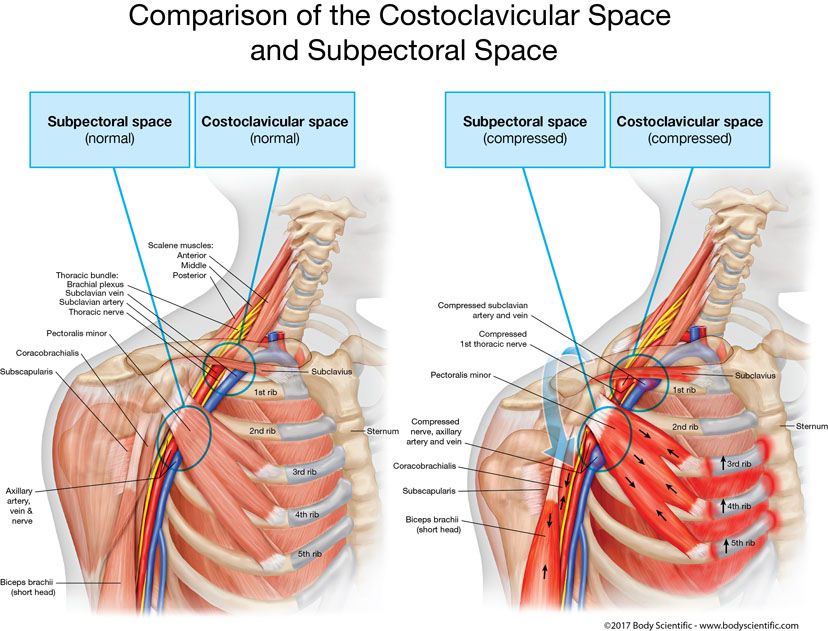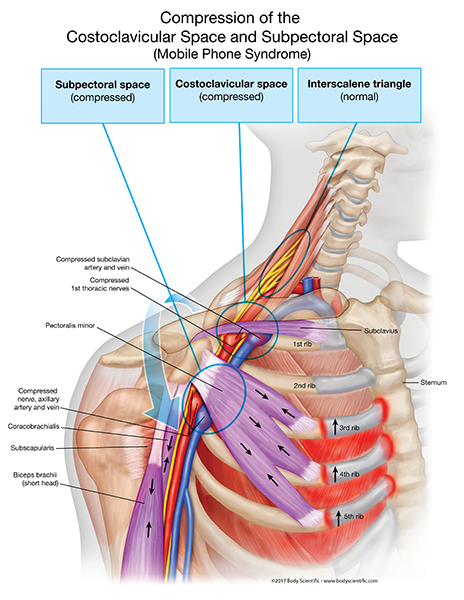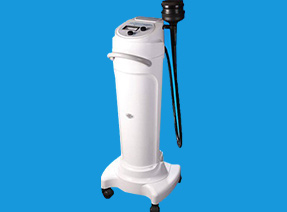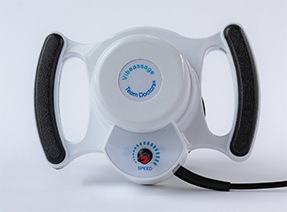The optimum management of TOS requires an understanding of the underlying cause(s) of the neurovascular compression or tension (1).
Don’t you hate when doctors give you a treatment without determining the cause?
Regardless if you have a work injury, auto accident, sports injury, repetitive motion, poor posture, or even cervical ribs, there is usually only one cause of your thoracic outlet syndrome, compression.
Many common, difficult-to-treat conditions share one cause: compression.
What if I told you that all these conditions share one thing in common? They are most commonly caused by too much compression or compressive tension on your human spring.
- Headaches
- Neck Pain
- Upper Back Pain
- Herniated Disc In The Neck
- Thoracic Outlet Syndrome
- Cubital Tunnel Compression
- Median Nerve Compression Of The Forearm
- Carpal Tunnel Syndrome Guyon’s Canal
- Low Back Pain
- Herniated Disc In The Low Back
- Degenerated Discs
- Degeneration Of The Knees
- Degeneration Of The Hips
Why are doctors so confused about which approach is best for conditions caused by compression?
In the United States, during the past two decades, there has been a dramatic increase in spinal fusion surgery for backaches. The doctors said the discs needed to be fused, because the discs were compressed. Because the discs were compressed, the surgeons fused them together. Again, there is that word, “compressed.”
All doctors agree that thoracic outlet syndrome is a compression of the outlet and tunnel where the blood vessels and nerves pass. When the muscles compress the outlet too much, the doctors perform surgery to cut them out.
They cut muscles out when they compress the outlet, and fuse the bones together when they compress the discs. Why don’t they cut out the muscles around the herniated discs, when they are compressed? Why don’t they fuse the structures around the thoracic outlet tunnel?
Their approaches to two conditions that are perpetuated by compression are approached completely different. It doesn’t make sense, does it? Again, it’s a painful misunderstanding of human mechanics.
Doctors who practice the human spring approach would approach both compressive disorders with the same treatment. We remove the cause of the compression and we use the same effective therapeutic approach. Guess what? It works magnificently virtually every time.
Now is the time to ask the magic question, “What is causing the compression?”
There is only one tissue that can cause compression of your thoracic outlet and twist your upper body into a chronic state of suffering. The main way you compress the thoracic outlet is if muscles contract and pull bones into the outlet or if muscles contract and compress the outlet.
Causes of Compression of the Thoracic Outlet and Tunnel
In 2,300 studies that came up in the search of the U.S. National Library of Medicine database, part of the National Institutes of Health, there are more than a dozen different ways the thoracic outlet and/ or tunnel can become compressed. They all come down to four main causes. The rest are so incredibly rare, that they aren’t worth mentioning.
- Muscle super contractions (spasms)
- Something grows into the outlet (scar tissue, tumor)
- Conditions you are born with or anomalies (cervical ribs, elongated bones)
- A traumatic shift (rib fracture, clavicle fracture, car accident, work injury, sports injury)
As you learned previously, the body is a spring. The balance of muscle strength and tension (tonus) on the spring mechanism is what allows your body to stay upright, protect you from collisions, recycle energy, and maintain spaces and tunnels for arteries and nerves to pass.
Muscles are the only tissues that can change the tension on your spring, and the nervous system is what controls the tension on the muscles. This strength of your spring mechanism and the balance of tension on the spring are programmed by you through your activities of daily life or programmed for you by your nervous system.
You know how why I’m right? When they do surgery to decompress your thoracic outlet they cut the muscles that lift the rib up into the outlet (anterior scalene muscle and middle scalene muscle and the rib.

Unfortunately this is not a perfect strategy for decompressing your thoracic outlet. That is because the anterior scalene and middle scalene are not the only muscles that compress the outlet.

The subclavius muscle, pectoralis minor muscle, coracobrachialis muscle, biceps short head, latissimus dorsi and lower trapezius drag the shoulder down into the thoracic outlet from below.

Even if you got the pectoralis minor muscle resected (cut), the shoulder would still be dragged into the thoracic outlet by the coracobrachialis muscle, biceps short head, latissimus dorsi and lower trapezius.
Do you realize you are cutting muscles and bones out of your body causing permanent damage to your structure simply because your doctors and therapists don’t have an effective approach to relaxing these spasmed muscles.
If you get a cramp in your calf or a stiff neck from a car accident, is the cure to cut those muscles out too?
Contact me for a free strategy meeting before you get surgery that you don’t need.

Dr James Stoxen DC., FSSEMM (hon) He is the president of Team Doctors®, Treatment and Training Center Chicago, one of the most recognized treatment centers in the world.
Dr Stoxen is a #1 International Bestselling Author of the book, The Human Spring Approach to Thoracic Outlet Syndrome. He has lectured at more than 20 medical conferences on his Human Spring Approach to Thoracic Outlet Syndrome and asked to publish his research on this approach to treating thoracic outlet syndrome in over 30 peer review medical journals.
He has been asked to submit his other research on the human spring approach to treatment, training and prevention in over 150 peer review medical journals. He serves as the Editor-in-Chief, Journal of Orthopedic Science and Research, Executive Editor or the Journal of Trauma and Acute Care, Chief Editor, Advances in Orthopedics and Sports Medicine Journal and editorial board for over 35 peer review medical journals.
He is a much sought-after speaker. He has given over 1000 live presentations and lectured at over 70 medical conferences to over 50,000 doctors in more than 20 countries. He has been invited to speak at over 300 medical conferences which includes invitations as the keynote speaker at over 50 medical conferences.
After his groundbreaking lecture on the Integrated Spring-Mass Model at the World Congress of Sports and Exercise Medicine he was presented with an Honorary Fellowship Award by a member of the royal family, the Sultan of Pahang, for his distinguished research and contributions to the advancement of Sports and Exercise Medicine on an International level. He was inducted into the National Fitness Hall of Fame in 2008 and the Personal Trainers Hall of Fame in 2012.
Dr Stoxen has a big reputation in the entertainment industry working as a doctor for over 150 tours of elite entertainers, caring for over 1000 top celebrity entertainers and their handlers. Anthony Field or the popular children’s entertainment group, The Wiggles, wrote a book, How I Got My Wiggle Back detailing his struggles with chronic pain and clinical depression he struggled with for years. Dr Stoxen is proud to be able to assist him.
Full Bio) Dr Stoxen can be reached directly at teamdoctors@aol.com























